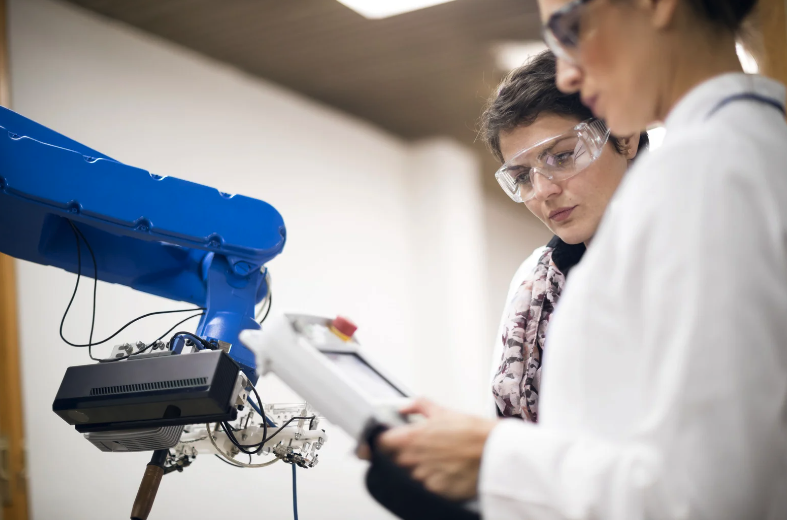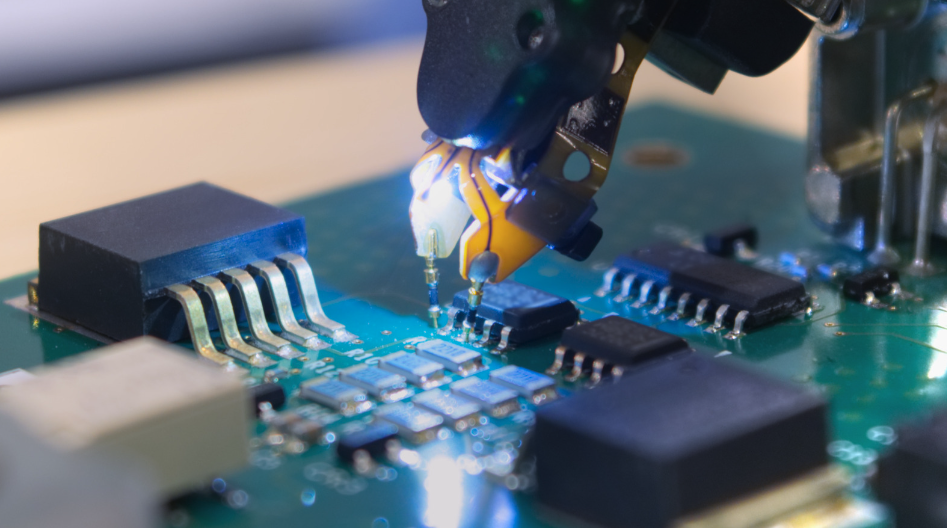SK Hynix Receives $450M in CHIPS Act Grants

More from the Category
SK Hynix
SK Hynix is a leading South Korean semiconductor manufacturer with a strong global presence and significant contributions to the semiconductor industry. It is known for being one of the world’s largest suppliers of dynamic random-access memory (DRAM) and flash memory (NAND) chips and also supplies CMOS image sensors, and solutions for AI servers, networking, mobile, PC, consumer and automotive applications.
SK Hynix was founded in 1983 at Hyundai Electronics and was integrated into the SK Group in 2012. The company works with tech giants like Microsoft, Apple, Dell and HP making it a key player in the global market.
SK Hynix plays an important role in the global semiconductor supply chain, especially due to its leadership in producing HBM (high-bandwidth memory) and DRAM (dynamic random-access memory chips). Additionally, the company heavily invests in research and development to drive advancements in-memory technology. Further, SK Hynix contributes to the security and stability of the semiconductor supply chain by expanding its operations and investing in advanced packaging and manufacturing facilities.
CHIPS Act Funding: A Catalyst for U.S. Semiconductor Growth

The CHIPS and Science Act was signed into law in August 2022. Its goal is to boost the United States semiconductor industry through significant investments and strategic initiatives and maintain U.S. leadership in technology and innovation.
The Act allocates nearly $53 billion to support the construction and expansion of US chip manufacturing. This includes $39 billion in incentives for chip manufacturing in the US and $13.7 billion for research and development. This includes the establishment of the National Semiconductor Technology Center and other R&D initiatives.
By reducing reliance on foreign semiconductor production, the Act aims to foster a more resilient and secure supply chain and generate thousands of high-paying jobs in the semiconductor industry. There is $200 allocated for workforce development and training programs to ensure a skilled labor force to support US chip manufacturing.
The CHIPS and Science Act incentivizes companies to build and expand semiconductor facilities in the U.S. to stimulate US chip manufacturing. It establishes a 25% federal income tax credit for investments in semiconductor manufacturing equipment and facilities, helping to reduce the overall cost for companies investing in US semiconductor production.
The CHIPS Act grants seek to revitalize the U.S. semiconductor industry, enhance competitiveness, and secure the nation’s technological future.
Details of the $450 Million in CHIPS Act Grants for SK Hynix
The $450 million in CHIPS Act grants for SK Hynix will support the establishment of a chip-manufacturing facility in Indiana.
A significant portion of the CHIPS Act grants will go towards building an advanced packaging plant focused on producing next-generation HBM chips. These chips are crucial for AI applications and high-performance computing.
The CHIPS Act grants will also support the creation of an R&D facility dedicated to advancing semiconductor packaging technologies. This will set SK Hynix ahead in AI innovative solutions and other next-generation technologies. This facility will help secure the nation’s technological future by improving US semiconductor supply chain security and reducing dependency on foreign sources.
SK Hynix will receive $500 million in government loans and benefit from a 25% investment tax credit, further supporting the project’s financial viability.
The New SK Hynix Facility

The $3.87 billion semiconductor facility will be located at the Purdue Research Park in West Lafayette, Indiana. Spanning 430,000 square feet across 90 acres, the facility is expected to reach full operational capacity by the second half of 2028.
The location was selected due to Indiana’s robust manufacturing infrastructure and R&D ecosystem, the presence of semiconductor experts and a strong talent pipeline at Purdue University, and the support provided by the state and local government.
“Indiana is a global leader in innovating and producing the products that will power our future economy, and today’s news is proof positive to that fact” –Indiana Governor Eric Holcombe
The new facility supported by the CHIPS Act grants is expected to create around 1,000 new jobs ranging from high-wage positions in advanced manufacturing to roles in research and development.
Strategic Importance of the Facility
The new SK Hynix facility in West Lafayette holds significant strategic importance. The facility will reduce U.S. reliance on foreign suppliers by producing High Bandwidth Memory (HBM) chips which are crucial for AI systems and other advanced technologies domestically. These chips are also crucial to graphic processing units (GPUs), which are used in AI training, supporting the development of more powerful AI systems.
This collaborations with Purdue University for R&D will foster innovations and help maintain technological leadership, aligning with the U.S. governments goals. Additionally, the facility is intended to bring more business and talent to the Midwest, contributing to the “Silicon Heartland” initiative of making the area a key semiconductor hub.
Broader Implications for the Semiconductor Industry

The CHIPS Act grants will, without a doubt, have significant effects on global semiconductor production, including boosting U.S. chip manufacturing, shifting supply chains, and encouraging technological advancements.
Alignment With Broader Industry Trends
SK Hynix’s investment support from the CHIPS Act funding aligns with several industry trends. The company is investing heavily in AI technologies, reflecting the broader industry trend towards enhancing AI capabilities and infrastructure.
The new facilities’ role in strengthening the US semiconductor supply chain aligns with the industry’s push to diversify and secure supply chains through increasing chip manufacturing in the U.S. Additionally, SK Hynix 74.6 billion investment plan through 2028 mirrors trends of substantial capital investments by major semiconductor companies striving to stay competitive and meet growing demands.
The company’s partnership with Purdue University also highlights the growing trend of innovation driven by the collaboration between industry and academia.
The Ripple Effect and Potential Future Investments
SK Hynix investment will have several ripple effects on the other semiconductor companies and future investments.
The new facility will likely spur other semiconductor companies to invest in advanced technologies or new facilities to stay competitive. SK Hynix’s investment in the region may also attract other companies to the area creating a hub for semiconductor production in Indiana and drawing more business and talent there.
The success of SK Hynix’s investment could encourage governments to offer more incentives and support for semiconductor manufacturing, including tax breaks, grants, and infrastructure development.
SK Hynix and Purdue’s collaboration highlights the importance of industry and academia partnerships and may encourage other companies to do the same, fostering more collaborative efforts to drive innovation and technological advancements.
SK Hynix investment is expected to create a positive feedback loop, encouraging further investments, innovation and collaboration within the semiconductor industry.
Far-Reaching Impacts
SK Hynix’s new facility, supported by CHIPS Act grants, is a significant development that will have far-reaching impacts on SK Hynix, the U.S. semiconductor industry, and global tech trends. This step represents a strategic move towards innovation, supply chain resilience, and economic growth.
Want to learn more about the CHIPS and Science Act? Check out the impacts of the legislation 2 years later.









